 |
| May 14, 2024 | Volume 20 Issue 18 |
Designfax weekly eMagazine
Archives
Partners
Manufacturing Center
Product Spotlight
Modern Applications News
Metalworking Ideas For
Today's Job Shops
Tooling and Production
Strategies for large
metalworking plants
Ferrari 12Cilindri: V12 power with ultimate style
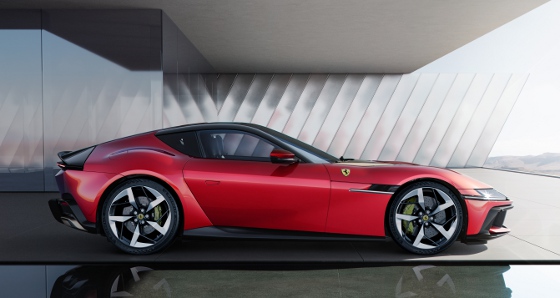
Inspired by the Gran Turismo cars of the 1950s and 1960s, the new Ferrari 12Cilindri two-seat berlinetta is a 830-hp, race-bred pure Italian stunner with a 6.5L V12 that combines driving thrills with versatility. In a world of boxy hybrids and all-electrics, it's a refreshing anomaly of elegant design and old-school raw potential.
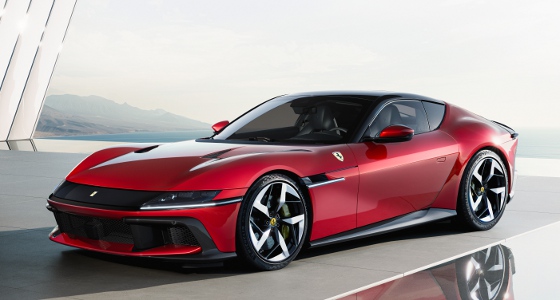
As a replacement for the 812 Superfast, the 12Cilindri can hold its own. The car's F140HD engine is the new version of the iconic, naturally aspirated Ferrari V12. Its max revs have been increased to 9,500 rpm, with 80% of total torque already available at just 2,500 rpm. Max torque is 678 Nm @ 7,250 rpm. The engine features modified components and software, some of which were already adopted on the special series 812 Competizione.
The 12Cilindri sports the 8-speed dual clutch transmission that was so well received with the SF90 Stradale. Thanks in part to larger tires on 21-in. rims, this solution delivers 5% shorter gear ratios in the lower gears and a 12% increase in torque at the wheels compared to previous V12 applications, all to the benefit of longitudinal performance under acceleration and gear shifting times (30% faster than the previous V12 berlinetta applications). The Ferrari 12Cilindri can be fitted with Michelin Pilot Sport S5 or Goodyear Eagle F1 Supersport tires, both of which were developed in a new size for the Maranello company: 275/35ZR21 at the front and 315/35ZR21 at the rear.
The car can do 0 to 62 mph in 2.9 sec and has a top speed of 211 mph.
To allow the V12 to rev so high, the engineers worked to reduce the weight and inertia of the engine's components, adopting titanium con rods, which guarantee a saving of 40% in rotating mass compared to steel with the same mechanical resistance. A different aluminum alloy was used for the pistons, making them lighter than on previous applications. Further weight reduction was gained by the adoption of a rebalanced crankshaft, which is 3% lighter.
The valvetrain with sliding finger followers is derived from Ferrari's unparalleled experience in Formula 1 and was developed specifically for the V12 with the aim of reducing mass and availing more high-performance valve profiles. The sliding finger follower, which is steel with a Diamond-Like-Carbon (DLC) coating, transmits the action of the cam to the valve using a hydraulic tappet as the pivot for its movement. The use of DLC reduces the coefficient of friction at critical points, significantly improving the mechanical efficiency of the engine.
Most of the modifications focused on optimizing torque delivery in all operating conditions. The result is an engine with exhilaratingly smooth, seamless response that delivers peak power at the red line.
Also, for the very first time on a naturally aspirated engine, an innovative software strategy was developed that can modify the maximum torque available as a function of the gear selected. This gives the driver the feeling of smooth, progressive pick-up as the transmission ratio increases, another vital factor in making the driving exhilaration delivered by the Ferrari 12Cilindri truly unique.
The Ferrari 12Cilindri features the four-wheel independent steering (4WS) that debuted on the special series 812 Competizione, which manages the movement of every wheel independently to improve yaw management in cornering and responsiveness during rapid direction changes. The rear-wheel steering has innovative mechanical characteristics that significantly improve precision of control of the position of each single actuator, giving faster axle response time and consequently improved responsiveness through corners. Optimum handling is also ensured thanks to a near-ideal weight distribution (48.4% front and 51.6% rear), and the car's responsiveness also benefits from the 20-mm reduction in the wheelbase compared to the 812 Superfast.
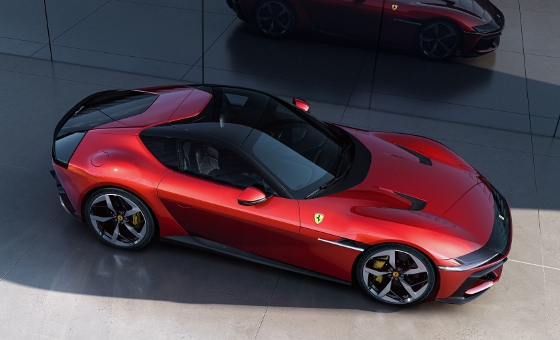
On the outside, the Ferrari Styling Center design team set out to radically transform the stylistic codes of Ferrari's previous mid-front-engined V12s. Clean lines dominate the car's geometry, underscoring the volumes that make up a seamlessly interconnected whole. The ultra-clean flanks sweep back along the entire car from a dihedral section. Although retaining a signature Ferrari sensuality, the wings have been sculpted with extreme geometric precision: All the lines are the result of intersections between the volumes, and a more functional approach to form has been taken that eschews nostalgia.
The muscular rear wing is imposing, yet also perfectly controlled geometrically. On the front wing, that muscular tension extends slightly, coming to rest along the flank and further accentuating the car's monolithic aesthetic.
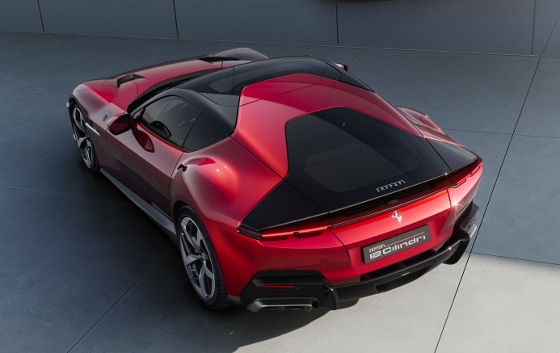
The sculpted hood is extremely sleek and incorporates the front wings. One of the objectives of the Ferrari 12Cilindri was to explore design languages only tangentially related to the car world. The front has thus lost certain signature elements, such as the elongated form of the headlights and the traditional grille shape, in favor of geometries and intersections innate to the car's design. The headlights are integrated into a single wraparound band from which the DRLs emerge like blades.
A similar approach has been taken with the rear architecture. The taillights are set into a blade that traverses the entire, concave rear section. Instead of adopting a rear spoiler, the designers have used two active flaps integrated with the rear screen, creating a signature delta theme. The overall impression is of a seamless whole, creating the idea of a very high-tech form. The development of this concept allowed the designers to treat the Ferrari 12Cilindri's cabin in a new way, tracing the frame of the surface in body color to echo the rear screen theme and integrate organically with the rest of the cabin, which itself is characterized by a black screen effect.
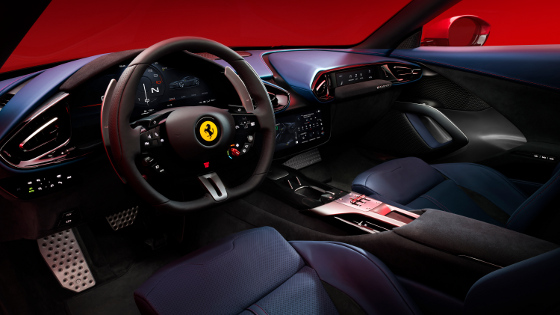
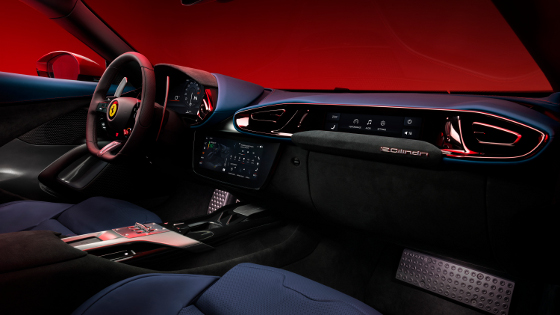
The tail section ends in a very clean, monolithic volume in body color as well. The lower section, in black or carbon fiber, is characterized by the prominent diffuser keels over which the body almost seems to float. This area also includes the sensors and two twin tailpipes. The pipes, comprising four elements altogether, also have a completely new shape, with a metal surround to reduce the perception of their size and create a more compact look.
As was the case with the 812 Competizione, downforce on the front underbody is generated by three pairs of vortex generators optimized in the wind tunnel. The front underbody also contributes to brake cooling by delivering a flow of lower-temperature air from the front splitter.
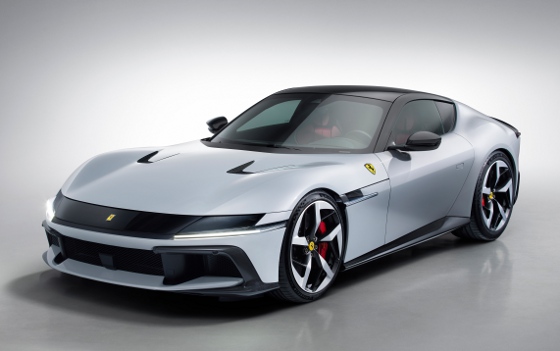
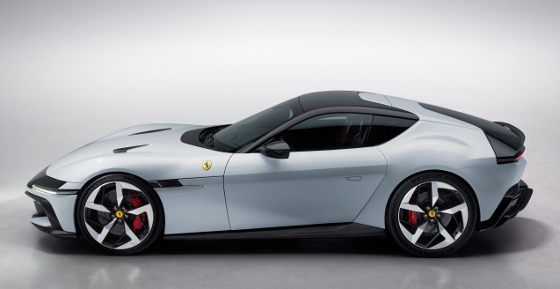
The gasoline direct injection system (GDI at 350 bar) comprises two fuel pumps and four rails with pressure sensors that provide feedback to the pressure control system. The electronic injectors can also control up to three injections per engine cycle. The new exhaust system, developed to allow the car to comply with the latest emissions requirements, introduces a ceramic catalytic converter coupled with a particulate filter. Ferrari says this is the most advanced emissions-reduction technology available and involved lengthy calibration of the software strategies.
Inside, the design of the Ferrari 12Cilindri's interior sees it split into three different levels: the first, dominated by the upper part of the dash, continues around to blend into the door panel trim; next is the central area; while the third includes the footwells and seats. Each level is clearly defined.
Ferrari's signature luxury and performance are flanked on the Ferrari 12Cilindri by a focus on environmental sustainability: extensive use has been made of sustainable materials such as Alcantara containing 65% recycled polyester.
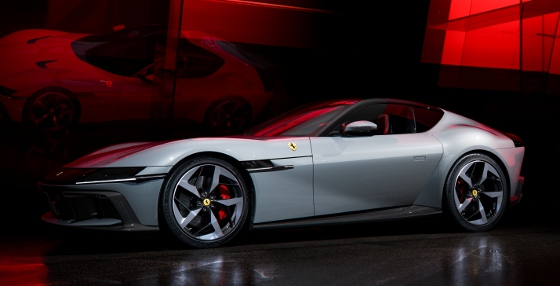
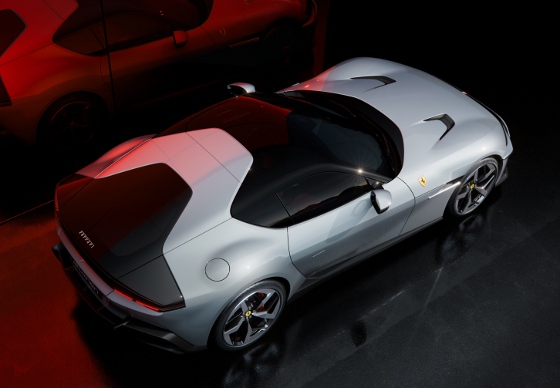
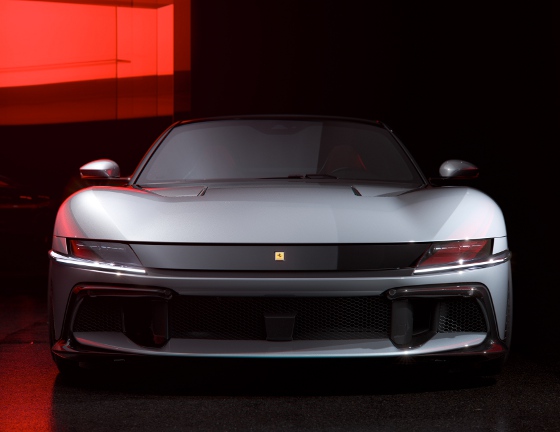
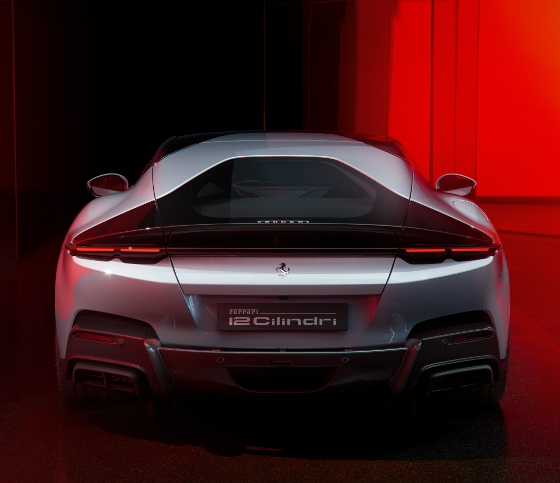
The interior style takes its inspiration from the Prancing Horse's dual-cockpit architecture. In recent years, that layout was used for the Ferrari Roma and Roma Spider as well as the Ferrari Purosangue. The Ferrari 12Cilindri's cabin has an almost-symmetrical structure comprising two modules for driver and passenger and offering an impressive standard of comfort and involvement in the driving experience.
A new generously sized tinted glass roof has been incorporated, which significantly improves the airiness of the cabin and thus the feeling of space on board, ensuring optimum thermal efficiency in both summer and winter. In terms of design, the darkened glass roof is perfectly integrated into the upper part of the cabin.
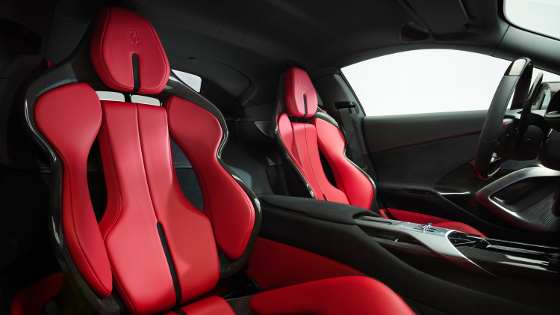
The Ferrari 12Cilindri introduces a new Human Machine Interface (HMI) comprising three displays that raise the Ferrari V12 berlinetta onboard experience to new heights. All of the main functions can be controlled from the central 10.25-in. touchscreen capacitive display within reach of both driver and passenger. This is flanked by a 15.6-in. driver display showing all of the driving and vehicle dynamics information. Lastly, the passenger gets their own 8.8-in. display.
Other standout interior features include a capacitive steering wheel and a 15-speaker, 1,600-W Burmester sound system. There are many more exciting features of this car, of course.
There will be a Spider convertible available too.
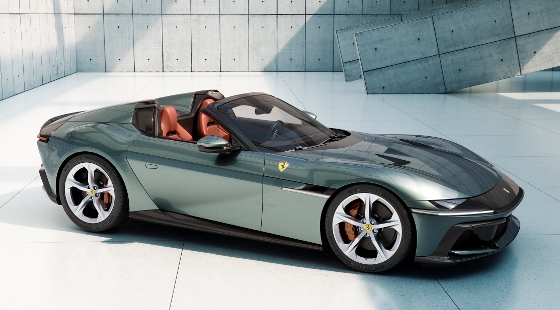
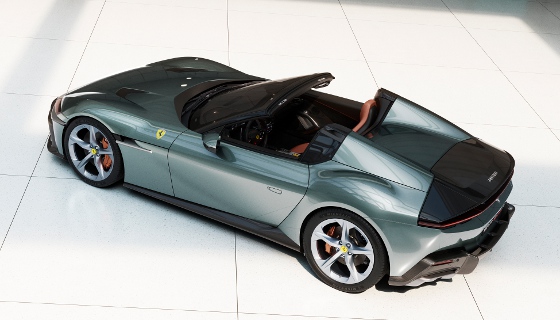
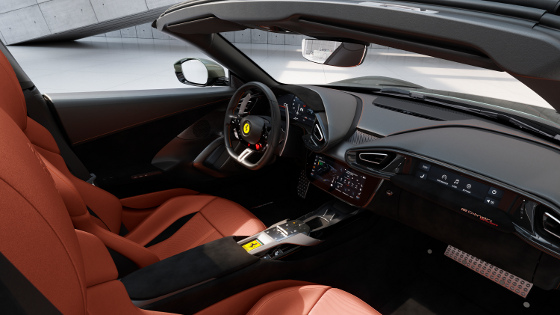
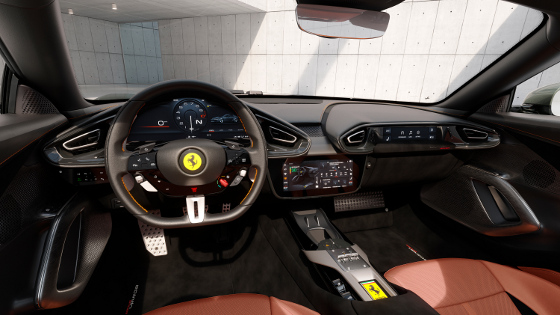
U.S. pricing has not been released, but the Ferrari 12Cilindri is likely to start around $350,000 if Italian prices loosely translate.
Sources: Ferrari
Published May 2024
Rate this article
View our terms of use and privacy policy
